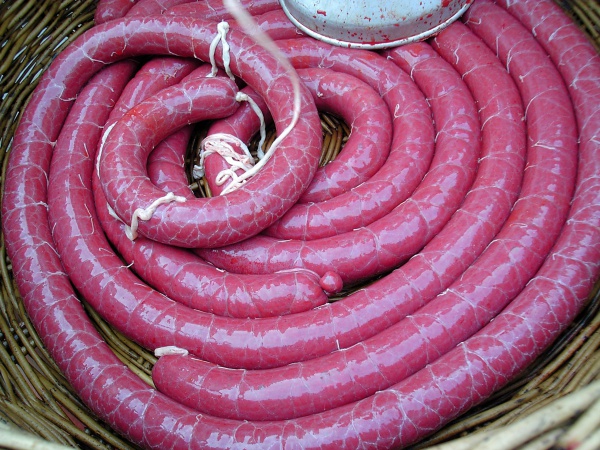Facts About Blood sausage
Blood sausages are a distinct type of sausage made with animal blood that is cooked or dried and combined with fillers until it solidifies when cooled. These sausages enjoy global popularity, with each country imparting its own unique twist to the recipe. The blood used can come from various animals, including pigs, cows, horses, donkeys, sheep, ducks, and goats.
In Europe and the Americas, typical fillers for blood sausages include meat, fat, suet, bread, cornmeal, onions, chestnuts, barley, oatmeal, and buckwheat. In the Iberian Peninsula and parts of Asia, rice is often incorporated. Some regions even offer sweet versions, incorporating ingredients such as sugar, honey, orange peel, and spices.
Different languages use overarching terms like "blood sausage" or "blood pudding" to describe these products, which may include animal ingredients or other fillers like bread and nuts. Specific names, such as "black pudding" are used for sausages that contain additional ingredients. Blood sausages are cherished across many regions, each showcasing its own preparation methods and flavors.
In Africa, Kenya's "mutura" is a traditional dish made with meat, blood, and spices, all encased in animal intestines. In the Americas, blood sausages are popular in the United States, Latin America, and the Caribbean, with variations like "morcilla" and "boudin." Asia offers its own array of blood-based dishes, with diverse ingredients and preparation styles in countries such as Korea, China, Mongolia, Taiwan, and Tibet.
Europe boasts a rich tradition of blood sausages, especially in the Central, Eastern, Northern, Southern, and Western parts of the continent. Popular varieties include Germany's "blutwurst" the UK's "black pudding" and Spain's "morcilla." Each region has its own special way of making and serving blood sausages, often featuring them in traditional dishes or as standalone delicacies.
Blood sausages also play an important role in cultural celebrations such as Mardi Gras and Carnival in various countries, where they hold symbolic significance. The extensive range of blood sausage varieties—including dishes like "blodpølse" "tongenworst" "mazzit" "krvavica" and "vėdarai"—underscores their global appeal and the rich culinary heritage they represent.

 France
France